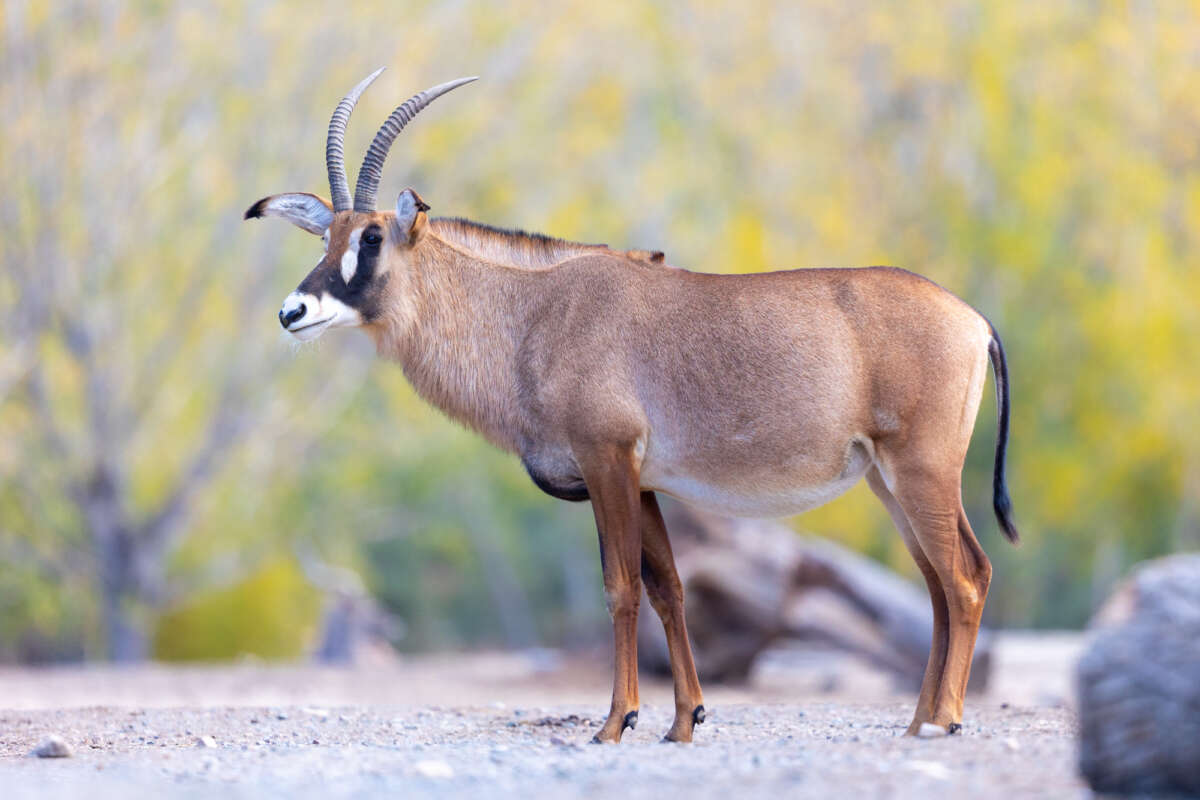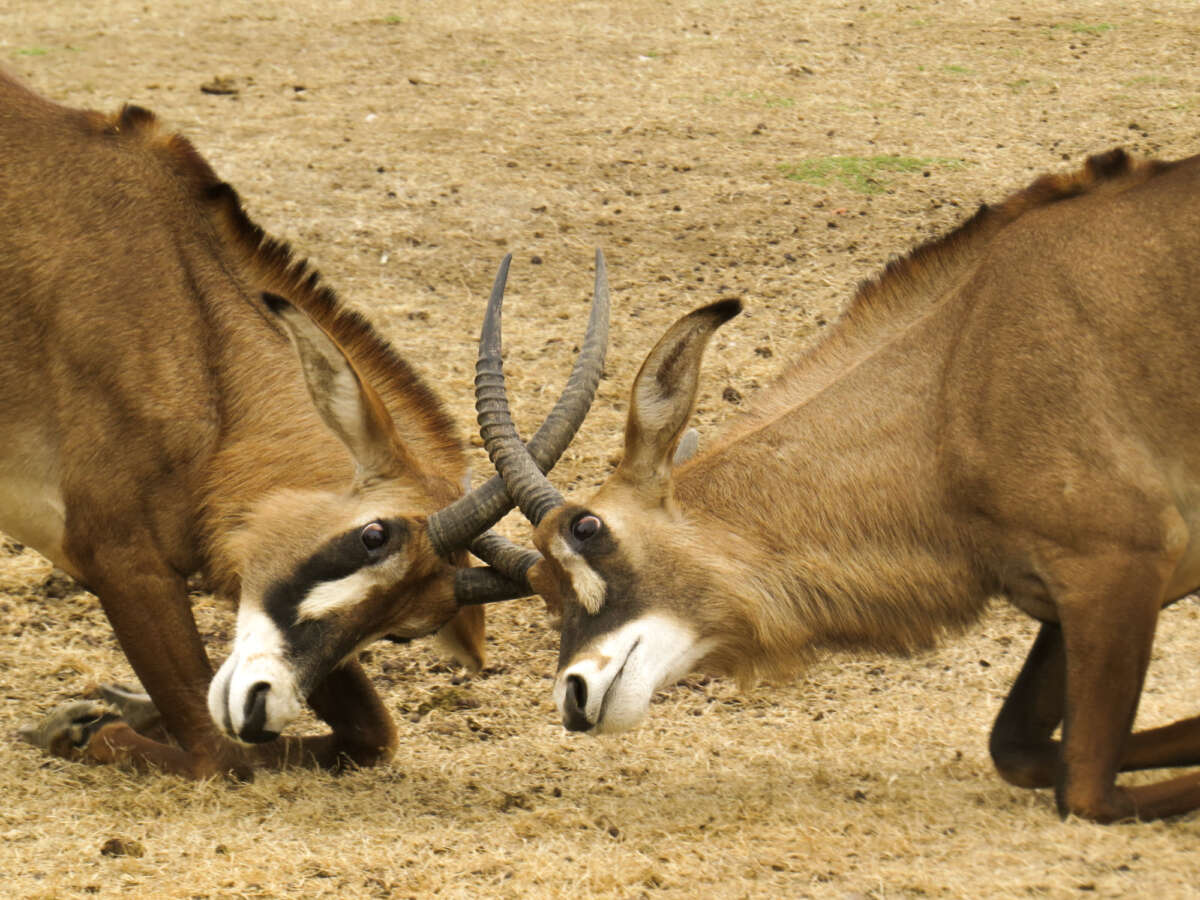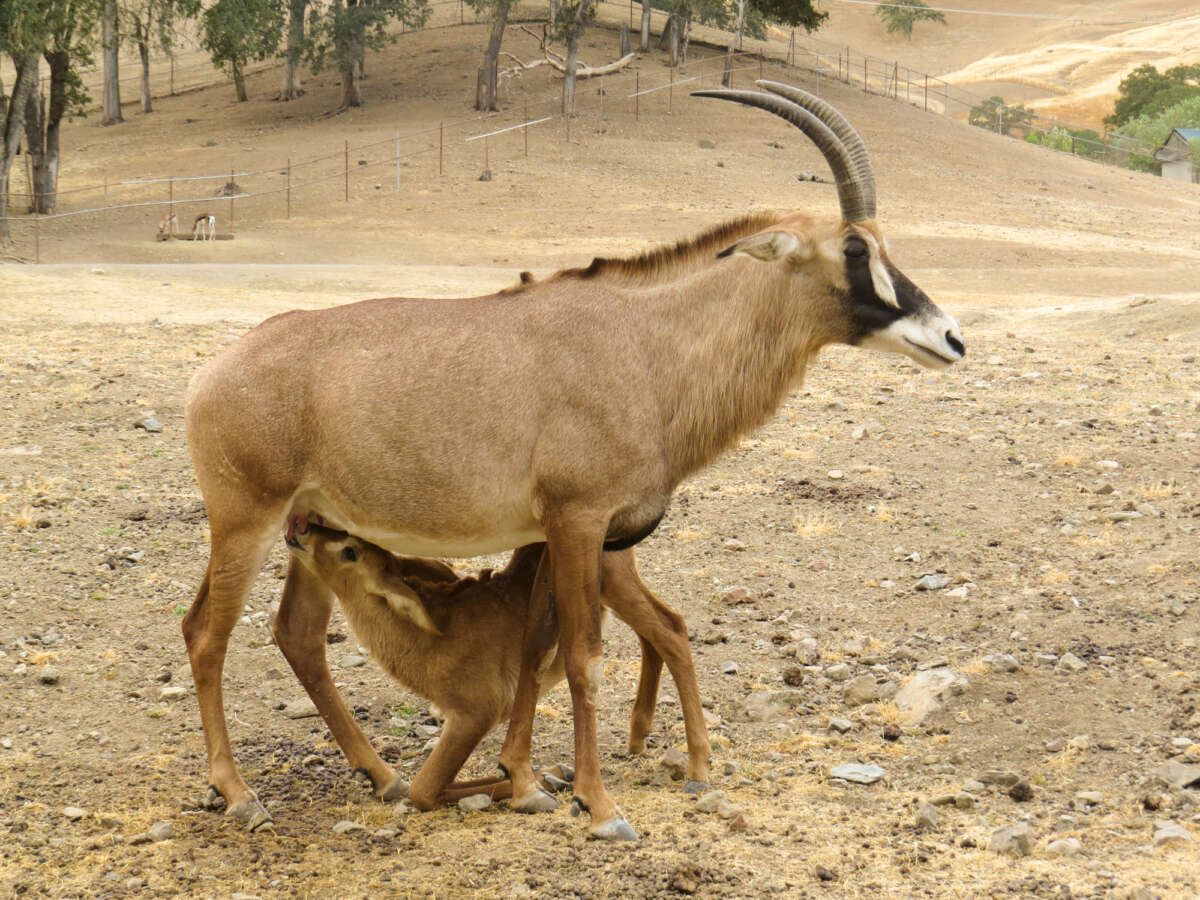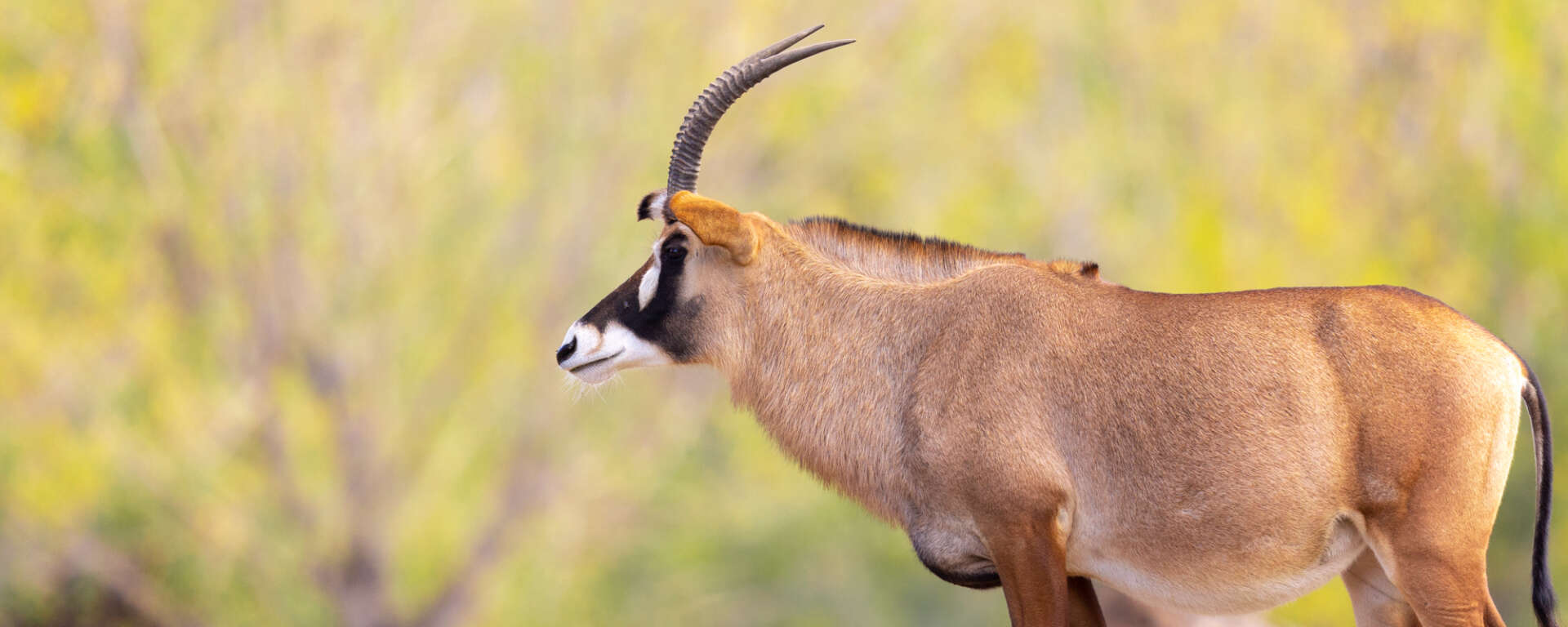Description
Roan antelope have a reddish-brown coat with a distinctive black and white facial mask. They have long, narrow ears with a tuft of black hair on the tip. Both sexes have heavily ridged horns that curve back from the head and can reach 2 – 3 ft (60 – 100 cm) in length. The presence of horns on both males and females, as well as the curved shape pointing towards the vulnerable neck of each antelope, suggests that one of the primary uses of these horns is defense against larger predators.
Cover photo: Two young male roan antelope playing & practicing a dominance fight by Mark Pressler
Classification
- Overview
- The roan antelope is an antelope in the Hippotragini tribe, which are described as grazers with somewhat horse-like bodies. Other members of this tribe include the Gemsbok, Scimitar-horned Oryx, and Addax.
- Class
- Mammalia
- Order
- Cetartiodactyla
- Family
- Bovidae
- Tribe
- Hippotragini
- Genus
- Hippotragus
- Species
- H. equines
Key Facts
- Conservation Status
- Least Concern
- Lifespan
- ~17 years
- Height
- 4.5 – 5 ft (~140 – 160 cm)
- Weight
- 495 – 660 lbs (~225 – 300 kg)
The IUCN Red List describes the roan antelope as a species of Least Concern, meaning conservationists across the world are not currently worried about the continuation of this species. In 2016, wild populations were assessed and found to be ~50,000 – 60,000 mature individuals strong. Recently, populations have declined due to habitat loss, agricultural encroachment, hunting and poaching.
Social Life
Roan are usually active during the cooler parts of the day, in the morning and evening. They are social and have been observed in herds of up to 35 individuals, though they are more commonly found in groups of 5 – 15. Their herds are made up of a single dominant male and a harem of females and their young. As with most harems there is also a dominance hierarchy among females, with one dominant female leader. Juvenile males form bachelor herds of 2 – 10 individuals when they are around 3 years of age until they reach maturity, and then become solitary and territorial. Fighting for dominance is common among both males and females. These fights occur with both animals on their front knees clashing their horns against each other. Roan are formidable opponents, charging and brandishing their horns with skill. If threatened they will run away from the threat for a short distance, then stop to look back. When pressured, they can run up to 35 mph (57 kph) for considerable distances.
Habitat and Range
Roan are found in grasslands and lightly wooded savannas from south of the Sahara to Botswana.
Diet
Roan are typically grazers that consume grasses, but will browse for leaves if grasses are unavailable. They must frequently drink water and are rarely found more than 2 – 3 mi (3 – 4 km) from a permanent water source.
Predators
Roan antelope will fight aggressively when threatened, making healthy adults relatively invulnerable to predation. Large predators such as lions, leopards, spotted hyenas, crocodiles and painted dogs will prey upon young, sick and elderly roan.
Reproduction
Sexual maturity: Male: 2.5 – 3 years, Female: 2.5 – 3 years
Mating Season: Year-round
Birth Season: Year-round
Gestation: 8.5 – 9.3 months
No. of Young: 1
- Information
-
Description
Roan antelope have a reddish-brown coat with a distinctive black and white facial mask. They have long, narrow ears with a tuft of black hair on the tip. Both sexes have heavily ridged horns that curve back from the head and can reach 2 – 3 ft (60 – 100 cm) in length. The presence of horns on both males and females, as well as the curved shape pointing towards the vulnerable neck of each antelope, suggests that one of the primary uses of these horns is defense against larger predators.
Cover photo: Two young male roan antelope playing & practicing a dominance fight by Mark Pressler
Classification
- Overview
- The roan antelope is an antelope in the Hippotragini tribe, which are described as grazers with somewhat horse-like bodies. Other members of this tribe include the Gemsbok, Scimitar-horned Oryx, and Addax.
- Class
- Mammalia
- Order
- Cetartiodactyla
- Family
- Bovidae
- Tribe
- Hippotragini
- Genus
- Hippotragus
- Species
- H. equines
Key Facts
- Conservation Status
- Least Concern
- Lifespan
- ~17 years
- Height
- 4.5 – 5 ft (~140 – 160 cm)
- Weight
- 495 – 660 lbs (~225 – 300 kg)
- Conservation
The IUCN Red List describes the roan antelope as a species of Least Concern, meaning conservationists across the world are not currently worried about the continuation of this species. In 2016, wild populations were assessed and found to be ~50,000 – 60,000 mature individuals strong. Recently, populations have declined due to habitat loss, agricultural encroachment, hunting and poaching.
- Lifestyle
Social Life
Roan are usually active during the cooler parts of the day, in the morning and evening. They are social and have been observed in herds of up to 35 individuals, though they are more commonly found in groups of 5 – 15. Their herds are made up of a single dominant male and a harem of females and their young. As with most harems there is also a dominance hierarchy among females, with one dominant female leader. Juvenile males form bachelor herds of 2 – 10 individuals when they are around 3 years of age until they reach maturity, and then become solitary and territorial. Fighting for dominance is common among both males and females. These fights occur with both animals on their front knees clashing their horns against each other. Roan are formidable opponents, charging and brandishing their horns with skill. If threatened they will run away from the threat for a short distance, then stop to look back. When pressured, they can run up to 35 mph (57 kph) for considerable distances.Habitat and Range
Roan are found in grasslands and lightly wooded savannas from south of the Sahara to Botswana.Diet
Roan are typically grazers that consume grasses, but will browse for leaves if grasses are unavailable. They must frequently drink water and are rarely found more than 2 – 3 mi (3 – 4 km) from a permanent water source.Predators
Roan antelope will fight aggressively when threatened, making healthy adults relatively invulnerable to predation. Large predators such as lions, leopards, spotted hyenas, crocodiles and painted dogs will prey upon young, sick and elderly roan.Reproduction
Sexual maturity: Male: 2.5 – 3 years, Female: 2.5 – 3 years
Mating Season: Year-round
Birth Season: Year-round
Gestation: 8.5 – 9.3 months
No. of Young: 1

Adult female roan antelope by Mark Pressler

Two young male roan antelope practice fighting by Mark Pressler

Baby roan antelope nursing from mother by Mark Pressler

